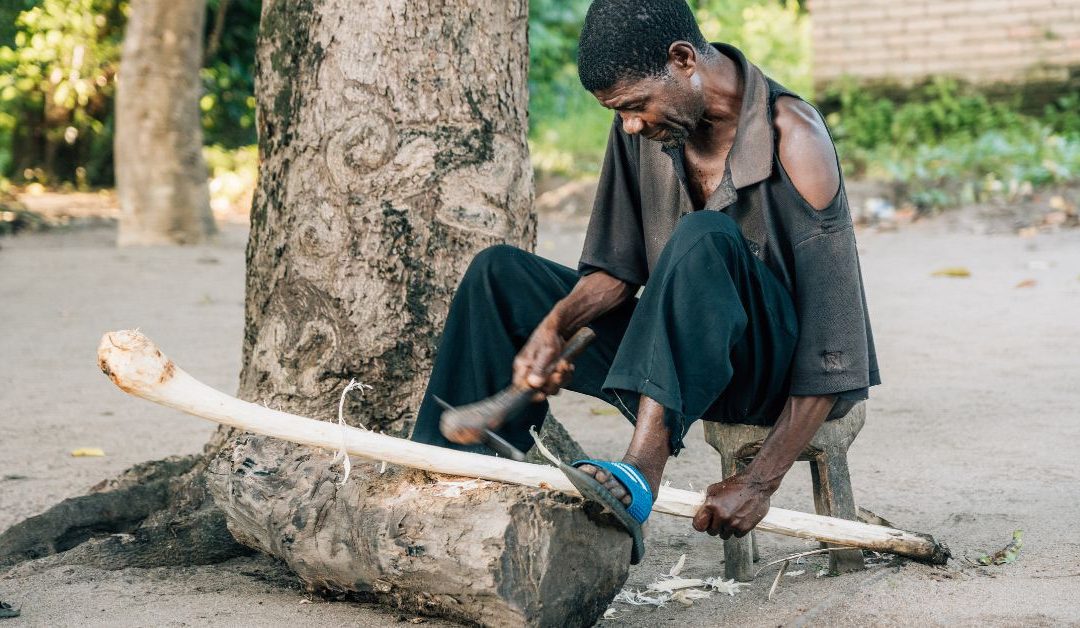The spread of Moroccan design and woodworking techniques to West Africa is a fascinating subject for any art historian. It’s an exploration into the history, culture, and artistic expression that has shaped this region of the world.
For many years, Morocco has been famous for its amazing craftsmanship and artwork. The special mix of Arab-Berber designs with African influences makes their pieces beautiful. People in countries like Nigeria and Ghana liked these designs and started using them in their work.
This article, explores how Moroccan woodworking techniques and designs influenced West African artistry.
Origins And History Of Moroccan Woodworking
For many years, Moroccan woodworking has been an important part of the country’s culture and identity. It includes beautiful carvings and intricate designs passed down through generations.
Craftsmen use different types of wood native to the region to make furniture and cabinets.
Moroccan design aims to be both pretty and practical, making sure each piece is both beautiful and useful.
They create vibrant works of art using simple materials like cedar, cypress, and juniper woods.
Moroccan woodworking blends traditional and modern techniques, inspiring today’s crafters. It has even spread to West Africa over time, leaving behind pieces that tell stories of creativity and ingenuity.
As we journey forward into exploring Moroccan designs further, let us appreciate all the magic they bring forth along the way.
Moroccan Design Principles And Aesthetic
Craftsmanship and artistry root the Moroccan style of design. They use various dyeing techniques and materials to create their beautiful designs. The patterns often include geometric shapes like circles, squares, and triangles to show unity and strength. They also use floral designs and animal figures that represent traditional beliefs.
These special designs tell us about Morocco’s cultural identity and heritage. That’s why this style has become popular in West Africa.
Now, we will examine the impact of Moroccan woodworking on West African design in greater depth.
Impact Of Moroccan Woodworking On West African Design
Moroccan design has influenced woodworking in West Africa. Artists near Morocco’s northern border learned how to do things like Moroccans. Plus, they added their own ideas to make something new and special.
Both countries use similar patterns like diamonds, triangles, and circles. They also share symbols like stars and crescents, as well as detailed arabesques.
Woodworkers in West Africa and Morocco use the same carving techniques, like intarsia and marquetry. Moroccan-inspired furniture often has curved lines lijke Arabic script and calligraphy.
It’s a special style where African craftsmanship combines with Middle Eastern designs. Woodworkers in West Africa get inspiration from each other while keeping their own unique regional touches.
With every piece they create, these artisans offer up a glimpse into the cultural exchange between Morocco and its neighbors to the south.
Examples Of Moroccan-Inspired Woodworking In West Africa
In West Africa, people use Moroccan-inspired woodworking techniques and designs in many places. They have unique tools like traditional saws and chisels made from animal horns. These tools help artisans create their beautiful pieces.
The designs in this artwork often come from North African culture, with geometric patterns and drawings of animals. It shows a strong connection between Morocco and nearby countries.
The artists learn from each other and combine their customs and skills to create new things. This makes unique objects that mix the traditions of both cultures.
Historians believe this sharing of culture led to the birth of new art forms. It shows how the two cultures respect and learn from each other.
This process continues over time, with each culture influencing the other’s creativity. As we explore further, we will learn more about the history of Morocco and West Africa and how connected they are.
Cultural Exchange Between Morocco And West African Countries
In the early 21st century, a surprising study found that Morocco was very influential in West African art. Many woodworking techniques and designs from Morocco spread to different parts of the continent. This happened because powerful patrons and trade networks connected the two regions for a long time.
Moroccan craftsmen are popular for their skills using traditional tools like lathes and chisels. They passed down their knowledge through generations. Some artists used materials like silver, copper, ivory, and leather to make beautiful art. West African cultures learned these techniques from Moroccan traders who brought them to new markets.
The exchange created rich craftsmanship traditions in both places. It shows how different societies have a connection, even if they are far apart. The unique artifacts made over time show how cultures share ideas through the influence of this artistic style.
In the future, it will be interesting to see how these relationships continue to grow. Now, let’s explore how craftsmen and craftswomen from both regions exchanged ideas and skills.
Exchange Of Craftsmen And Craftswomen
Long ago, Morocco and West African countries exchanged their cultures. Many craftsmen and craftswomen came from nearby areas. They brought lots of knowledge about woodworking, tools, and designs that West African tribes still use today.
The transfer of these skills is evident today through the various styles of furniture present throughout the region. Notable examples include:
- Intricate carvings on chairs and stools
- Geometric patterns for bed frames
- Detailed designed cabinets
Moroccan artisans had a big influence on art forms in West Africa. Moroccan artisans shared skills with locals. This led the bridging ethnic identities with modern ideas while preserving old traditions.
This exchange of craftsmen not only shaped the creative scene but boosted the region’s economy too. Next, we’ll see how Moroccan woodworking techniques spread across West Africa.
Adaptation Of Moroccan Woodworking Techniques
The way Moroccan woodworking techniques have changed over time is visible in many places across West Africa.
In countries like Nigeria and Burkina Faso, artisans have adapted these styles and made them their own.
Moroccan woodworking is famous for its use of geometric designs and animal shapes like birds or lions. When combined, they create amazing furniture and sculptures that take a lot of skill to make.
This blend of creativity and talent is now part of the culture in this region, inspiring many beautiful artworks.
As it spreads in West Africa, more discover the beauty and complexity of making these stunning creations. With each new generation, the tradition continues to thrive, showing how flexible and strong this ancient practice is.
As we look forward to the future, we can be sure that Moroccan woodworking will keep amazing and delighting us for many years to come.
Expansion Of Moroccan Woodworking Designs And Styles
Moroccan woodworking has fascinated people for a long time. Its special designs and dyeing techniques have spread to different parts of Africa.
In West Africa, Moroccan-style carved wooden objects are popular. They use patterns like stars and crescents inspired by Islamic art. Some artisans add beautiful floral carvings to things like chests or cabinets. They use vibrant dyes to add bright colors to the finished pieces, making them look even more amazing.
You can see this Moroccan influence in many things like masks and wall panels. Handcrafted furniture and sculptures are beautiful art from Moroccan woodworking in West Africa. It adds a unique and exotic look to the region.
Frequent-Asked Questions
Are There Other Countries Get Influenced By Moroccan Woodworking?
Moroccan woodworking techniques have influenced many countries around the world. Places like India, Egypt, Iran, and parts of Europe are learning from each other to create unique styles. This has been happening for a long time and makes the world diverse and exciting!
How Has The Internet Affected The Exchange Of Moroccan Woodworking Techniques?
In recent years, the internet has changed how Moroccan shared their woodworking with other countries.
Artisans in Morocco can now show their skills to people all around the world using digital marketing.
This helps people from different cultures share their skills and ideas with each other.
The internet lets people with similar interests or goals connect and learn from each other easier than ever before.
What Are The Economic Benefits Of Moroccan Woodworking In West Africa?
It’s no wonder that the economic benefits of Moroccan woodworking in West Africa are becoming more and more evident.
The exchange of culture and apprenticeships has been a great thing for the region, and it keeps getting better!
African art historians say this trend is revolutionary. Moroccan craftsmanship is now spreading fast across the continent. Making it easy for people to create beautiful art while helping local economies.
Moroccan woodworking techniques and designs have traveled to West Africa. This brought upon both economic and cultural changes.
Thanks to the internet, more people worldwide can now see and use these special designs and tools. As an African art historian, I’m fascinated by the intricate details in each piece. From hand-carved patterns to precious metal decorations.
Using Moroccan woodworking techniques has many benefits, but it’s essential to remember safety too. Since it’s a bit tricky, proper training are crucial before starting any projects.
With patience and skill, anyone can create beautiful works of art inspired by Morocco’s history. These pieces will stand out as unique and special.







